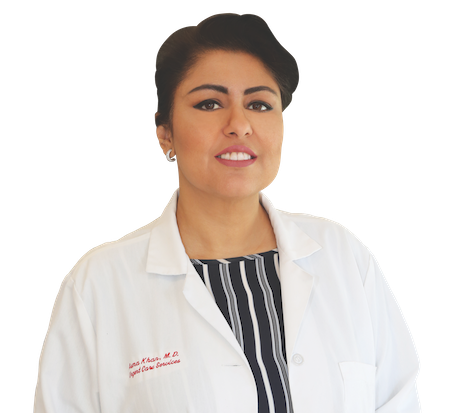by Dr. Asma Khan, MD, HRHCare Urgent Care, Nyack
With spring bursting forth around us, we are all eager to head outdoors and enjoy the warmer weather. However, for people with allergies, this often isn’t possible without sniffling, sneezing, and itchy eyes. Whether it’s tree pollen, weeds, or mold, we need to understand what’s causing our allergies, and how to keep them under control.
What’s Making You Sneeze?
Pollen grains are the tiny cells that are needed to fertilize plants, and it’s likely that they are causing your springtime misery. These pollen grains, produced by trees, grasses, and weeds, are very small and very light. They are designed to travel on the wind up to 100 miles from their original source. Different people are sensitive to various kinds of pollen, but it’s not a surprise that hay fever or spring allergies typically flare up on windy days.
How to Control Your Symptoms
- Reduce your pollen exposure. Pollen counts are generally higher from 10a and 4p. Staying indoors during those hours can help. Try running errands or exercising outside in the early morning or late afternoon. Remove your shoes before going inside so you don’t track in pollen.
- Eat the right foods. Powerful antioxidants found in fruits, vegetables, nuts, seeds, and green tea help battle inflammation from inside your body. Try eating foods rich in omega-3s as well, such as fish, tofu, and spinach.
- Reduce stress. Every time you feel stressed, your body releases stress hormones that send signals to different parts of your body to prepare for action. If you don’t physically release the stress, it can affect the safeguard of your health, the immune system. A weakened immune system means a higher chance of allergic reactions.
- Spring-cleaning. Fabric-covered furniture and pillows can all contribute to allergies. Do a top-to-bottom inspection of your house to clean out spots where allergens can congregate, such as bedding, rugs and carpeting, damp spots, and mold in the bathroom and kitchen. It’s also important to keep your air conditioning and furnace filters fresh.
- Avoid dust mites. Using mite-proof impermeable mattresses and pillow covers can be an effective way to reduce symptoms.
- Shower before bed. Washing your hair and skin before bed removes pollen and reduces overnight irritation. Also remember to thoroughly wash your pets after they’ve been outside during the day–particularly if they sleep in the bedroom.
Allergies: What You Need to Know
Treatment for allergies should always be based on the severity of your symptoms, and can differ from person to person. Education on your condition is key so you can avoid known allergens.
The most effective treatment is intranasal corticosteroids (nasal sprays), and should be the first-line therapy for persistent symptoms. Severe allergies that do not respond to intranasal corticosteroids should be treated with antihistamines, decongestants, or other treatments, such as cromolyn, leukotriene receptor antagonists, or nonpharmacological therapies such as nasal irrigation.
Don’t let pollen keep you inside this spring! Talk with your doctor about which allergy treatment is right for you.
 Asma Khan, MD, is the Clinical Director at HRHCare Urgent Care, 84 N Highland Ave between High Street and Sickles Ave in Nyack. Along with offices in Haverstraw and Spring Valley, the facility is part of the 28 health center HRHCare network in the Hudson Valley and Long Island providing comprehensive primary care.
Asma Khan, MD, is the Clinical Director at HRHCare Urgent Care, 84 N Highland Ave between High Street and Sickles Ave in Nyack. Along with offices in Haverstraw and Spring Valley, the facility is part of the 28 health center HRHCare network in the Hudson Valley and Long Island providing comprehensive primary care.
See also:
- What to Know About the Impetigo Skin Infection, 3/18/2018
- How to Know If You Have a Concussion, 2/24/2018
- How to Prevent and Cope with Back Pain, 12/17/2017
- Antibiotics For Flu?, 11/19/2017
- This Halloween, Beware PreDiabetes, 10/29/2017
- The Lowdown on Sexually Transmitted Infections, 9/24/2017
- The Ankle Heal: Sprained Ankles 101, 8/20/2017
- Staying Sun Safe This Summer, 7/23/2017
- How to Stay Tick-Free This Summer, 6/13/2017
- How to Sneeze-Proof Your Spring, 5/14/2017
- The Zika Virus, 2017 Edition, 4/12/2017
- Pneumonia: What To Know, What To Do, 3/14/2017








